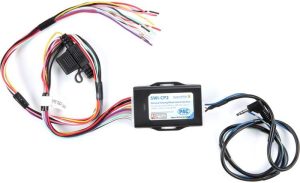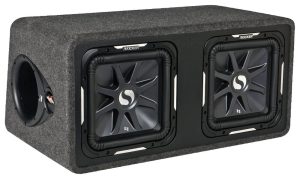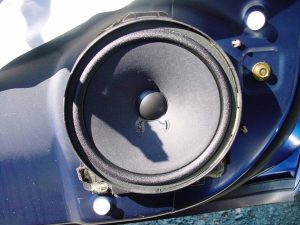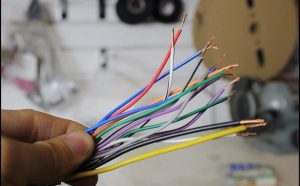Car audio enthusiasts often seek ways to enhance their listening experience, and one of the most effective ways to achieve this is by adding a subwoofer to their car stereo system. However, the magic of a subwoofer comes to life when it’s powered by the right amplifier. In this comprehensive guide, we will answer all your questions regarding choosing the perfect amplifier for your subwoofer in your car audio system. We’ll delve into the importance of matching amplifiers and subwoofers, discuss crucial specifications, and offer practical advice for making the best selection.
Contents
- What Is the Purpose of an Amplifier in a Car Stereo System?
- Why Is It Important to Match the Amplifier with Your Subwoofer?
- What Should I Consider When Choosing an Amplifier for My Subwoofer?
- How Do I Determine the Power Rating for My Subwoofer?
- What Are the Different Types of Amplifiers?
- How Do I Match the Amplifier’s Wattage to the Subwoofer?
- How Does Impedance Play a Role in the Amplifier Selection?
- Can I Bridge an Amplifier for a Subwoofer?
- Do I Need a Monoblock or Multi-Channel Amplifier for My Subwoofer?
- How Does the Car’s Electrical System Affect Amplifier Selection?
- What Are Some Common Mistakes to Avoid When Matching Amps and Subwoofers?
- Conclusion
What Is the Purpose of an Amplifier in a Car Stereo System?
Before we dive into the specifics of matching amplifiers and subwoofers, it’s essential to understand the fundamental role of an amplifier in a car stereo system. Amplifiers are electronic devices designed to take the low-voltage audio signal produced by your car’s head unit or source and boost it to a level that can drive your speakers, including subwoofers. In other words, they make your music sound louder and more powerful.
Amplifiers play a pivotal role in delivering clear and dynamic audio to your car’s sound system. Without them, your music would sound weak and lackluster, especially when it comes to the deep bass frequencies produced by subwoofers.
Why Is It Important to Match the Amplifier with Your Subwoofer?
Matching the right amplifier to your subwoofer is crucial for several reasons:
a. Performance: The primary reason to match your amplifier and subwoofer is to ensure the best possible performance. An underpowered amplifier will not provide enough power to the subwoofer, resulting in weak and distorted bass. On the other hand, an overpowered amplifier can lead to damage to the subwoofer.
b. Sound Quality: Matching your amplifier and subwoofer also ensures optimal sound quality. When the amplifier is perfectly matched, it can accurately reproduce the bass frequencies, providing a clear and distortion-free sound.
c. Longevity: Using the correct amplifier safeguards the longevity of your subwoofer. Overpowering a subwoofer can cause its voice coils to overheat, leading to irreparable damage.
What Should I Consider When Choosing an Amplifier for My Subwoofer?
When selecting an amplifier for your subwoofer, it’s essential to consider several factors to make an informed choice:
a. Subwoofer Specifications:
Power Handling: The power handling specification of a subwoofer indicates the amount of power it can handle continuously without getting damaged. It is typically represented in watts RMS (Root Mean Square). When selecting an amplifier, aim for one whose RMS power output matches or slightly exceeds the subwoofer’s RMS rating.
Impedance (Ohms): Subwoofers come in different impedance ratings, usually 2 ohms, 4 ohms, or 8 ohms. The amplifier’s impedance should match the subwoofer’s impedance for optimum performance. Mismatched impedance can result in poor power transfer and potential damage to the equipment.
Size: The physical size of the subwoofer can influence the choice of enclosure type and the available space in your vehicle. Ensure that the amplifier you choose can fit in your car and accommodate the subwoofer’s enclosure requirements.
b. Amplifier Specifications:
Wattage (RMS): The wattage rating of an amplifier, specifically its RMS (Root Mean Square) power output, is one of the most critical factors. To match the amplifier to the subwoofer, the RMS power output of the amplifier should closely align with the subwoofer’s RMS power handling.
Number of Channels: For subwoofers, a monoblock amplifier (single-channel) is typically the preferred choice. Monoblock amplifiers are designed to provide ample power to subwoofers and are tailored for low-frequency reproduction.
Amplifier Class: Amplifiers come in many classes, including Class A, Class AB, Class D, and more. Each class has its advantages and disadvantages. For subwoofers, Class D amplifiers are often preferred due to their high efficiency and ability to handle the power demands of bass frequencies.
c. Compatibility with the Car’s Electrical System:
Consider your car’s electrical system’s capacity when choosing an amplifier. Some high-powered amplifiers may require additional components like capacitors or alternator upgrades to avoid putting excessive strain on your vehicle’s electrical system. It’s important to ensure that the electrical system can handle the power requirements of the amplifier to avoid voltage drops and potential damage.
How Do I Determine the Power Rating for My Subwoofer?
To make an informed choice when selecting an amplifier for your subwoofer, it’s crucial to understand the power rating of your subwoofer. Subwoofers typically have two key power ratings:
- RMS Power Ratings: The RMS (Root Mean Square) power rating represents the continuous power handling capacity of the subwoofer. It is the most important specification when matching an amplifier to a subwoofer. For optimal performance, choose an amplifier whose RMS power output closely matches the subwoofer’s RMS rating. This ensures that the subwoofer operates within its safe power range without distortion or damage.
- Peak Power Ratings: Peak power ratings represent the maximum power that a subwoofer can handle in short bursts. While peak power ratings can be impressive, they are not as crucial as RMS ratings when matching an amplifier. Peak power ratings are often used for marketing purposes and may not accurately reflect a subwoofer’s real-world performance.
What Are the Different Types of Amplifiers?
Amplifiers come in various classes, each with its own characteristics and applications. Here are the most common amplifier classes:
Class A Amplifiers:
Known for their high sound quality.
They operate by conducting current throughout the entire cycle of the input signal.
While they offer excellent sound quality, they are less efficient and generate a significant amount of heat. As a result, they are not commonly used for subwoofers due to their inefficiency.
Class AB Amplifiers:
Class AB amplifiers make a balance between sound quality and efficiency.
They combine features of both Class A and Class B amplifiers, using transistors to conduct current through part of the input cycle.
Class AB amplifiers are versatile and suitable for a wide range of applications, including powering subwoofers.
Class D Amplifiers:
Class D amplifiers, also known as “digital” or “switching” amplifiers, are highly efficient and compact.
They work by rapidly switching the output transistors on and off.
Class D amplifiers are known for their ability to generate less heat, making them suitable for subwoofers and space-constrained installations.
They are excellent for bass delivery and are widely used in car audio systems.
Each amplifier class has its advantages and disadvantages, and the choice depends on your specific requirements and preferences. For subwoofers, Class D amplifiers are often favored due to their efficiency, compact size, and ability to handle the demands of low-frequency reproduction.
How Do I Match the Amplifier’s Wattage to the Subwoofer?
Matching the amplifier’s wattage to the subwoofer’s power handling is essential to ensure optimal performance and prevent damage. The general rule of thumb is as follows:
The amplifier’s RMS wattage output should be as close as possible to the subwoofer’s RMS power handling rating. Ideally, it should slightly exceed the subwoofer’s RMS rating to provide headroom for dynamic peaks in music without risking distortion or damage.
For example, if you have a subwoofer with an RMS power handling rating of 500 watts, selecting an amplifier with an RMS output of 500-600 watts is a suitable choice. This ensures that the subwoofer receives the power it needs for clear and powerful bass performance.
How Does Impedance Play a Role in the Amplifier Selection?
Impedance, measured in ohms (Ω), is a critical factor in matching amplifiers and subwoofers. Impedance work for the electrical resistance of the subwoofer’s voice coil. Common impedance ratings for subwoofers are 2 ohms, 4 ohms, and 8 ohms.
To achieve a proper match between the amplifier and subwoofer, the impedance of the amplifier should closely match the impedance of the subwoofer. Here’s how impedance plays a role:
a. Matching Impedance: When the amplifier’s impedance matches the subwoofer’s impedance, it allows for efficient power transfer and ensures that the amplifier can deliver power to the subwoofer without strain. This results in better result and sound quality.
b. Series vs. Parallel Wiring: If the amplifier’s impedance does not match the subwoofer’s impedance, you may need to use series or parallel wiring configurations to achieve the desired impedance. In series wiring, the total impedance increases, while in parallel wiring, it decreases. Wiring configurations can help you achieve a match, but it’s essential to consult the subwoofer and amplifier manuals or seek professional advice to avoid wiring errors.
c. Impedance and Power Output: It’s important to note that the subwoofer’s impedance can also affect the power output of the amplifier. When the impedance of the subwoofer decreases (e.g., from 8 ohms to 4 ohms), the amplifier may deliver more power. Conversely, when the impedance increases, the amplifier may deliver less power. It’s crucial to account for these changes when matching amplifiers and subwoofers.
Can I Bridge an Amplifier for a Subwoofer?
Bridging an amplifier is a technique that involves combining two amplifier channels to create a single channel with increased power output. While bridging can be useful for certain applications, it’s not always the best choice for subwoofers. Here’s why:
a. Bridging Basics: Bridging an amplifier typically involves using the left and right channels and configuring them to work as a single channel. This effectively doubles the power output of the amplifier. For example, if you have a 2-channel amplifier rated at 100 watts per channel, bridging it will result in a single channel with 200 watts of power.
b. Subwoofer Requirements: Subwoofers generally benefit from having a dedicated amplifier channel to reproduce low-frequency bass effectively. Bridging an amplifier for a subwoofer may result in excessive power that the subwoofer cannot handle, potentially causing damage.
c. Multi-Channel Amplifiers: Many car amplifiers, especially those designed for subwoofers, come in monoblock (single-channel) configurations. Monoblock amplifiers are specifically tailored for low-frequency reproduction and provide the necessary power without the need for bridging.
d. Speaker-Level vs. Line-Level Inputs: When considering bridging, it’s essential to check if the amplifier supports it and to understand whether you should use speaker-level inputs (for factory head units) or line-level inputs (for aftermarket head units).
Do I Need a Monoblock or Multi-Channel Amplifier for My Subwoofer?
When choosing an amplifier for your subwoofer, one of the primary considerations is whether to opt for a monoblock (single-channel) amplifier or a multi-channel amplifier. Let’s explore the characteristics of each:
a. Monoblock Amplifiers: Monoblock amplifiers are designed to power a single channel, making them ideal for subwoofers. They are optimized for low-frequency reproduction and are highly efficient in delivering power to your subwoofer. Monoblock amplifiers are popular choices for car audio enthusiasts seeking to maximize bass performance.
b. Multi-Channel Amplifiers: Multi-channel amplifiers, such as 2-channel, 4-channel, or 5-channel amplifiers, are versatile and can be used to power multiple speakers in your car audio system, including subwoofers. However, when using a multi-channel amplifier for a subwoofer, it’s important to ensure that the amplifier has a dedicated channel with sufficient power output for the subwoofer. Using a multi-channel amplifier for a subwoofer can be a cost-effective solution if you plan to expand your system to include other speakers in the future.
The choice between a monoblock and multi-channel amplifier depends on your specific setup and future plans. If you are primarily focused on maximizing bass performance, a monoblock amplifier is a dedicated solution designed for that purpose. However, if you have a broader audio system with other speakers to consider, a multi-channel amplifier with dedicated power for the subwoofer may be a suitable choice.
How Does the Car’s Electrical System Affect Amplifier Selection?
The electrical system of your car plays a crucial role in amplifier selection. The power requirements of an amplifier, especially high-powered amplifiers, can strain your car’s electrical system. To ensure that your amplifier operates optimally and that your vehicle’s electrical system is not overloaded, consider the following:
a. Electrical System Capacity: Assess the capacity of your car’s electrical system, which includes the alternator, battery, and wiring. High-powered amplifiers draw more current, and if your electrical system cannot provide the necessary power, it can result in voltage drops, dimming headlights, and other electrical issues.
b. Upgraded Alternator: If you plan to install a high-wattage amplifier, it’s advisable to consider upgrading your car’s alternator. An upgraded alternator can provide the necessary current to power your amplifier without straining the stock electrical system.
c. Additional Components: In some cases, additional components may be needed to ensure stable power delivery. Capacitors, for example, can help store and release energy when needed, reducing strain on the electrical system. However, it’s essential to consult with a professional or refer to your amplifier’s manual to determine if these components are necessary for your specific setup.
By considering your car’s electrical system capacity and making any necessary upgrades, you can ensure that your amplifier operates efficiently and that your vehicle’s electrical components are not overtaxed.
What Are Some Common Mistakes to Avoid When Matching Amps and Subwoofers?
When selecting an amplifier for your subwoofer, it’s important to avoid common mistakes that can lead to performance issues and potential damage. Here are some common faults to steer clear of:
a. Using an Underpowered Amplifier: Selecting an amplifier with lower power output than your subwoofer’s RMS rating can result in weak and distorted bass. The amplifier will struggle to provide enough power, leading to poor performance.
b. Overpowering the Subwoofer: Choosing an amplifier with significantly higher wattage than your subwoofer’s RMS rating can cause damage to the subwoofer. Overpowered amplifiers can overheat voice coils, blow fuses, and lead to permanent damage.
c. Neglecting Impedance Matching: Ignoring the impedance ratings of the amplifier and subwoofer can lead to inefficient power transfer, decreased performance, and potential damage. Ensure that the impedance of the amplifier matches the subwoofer’s impedance.
d. Incorrect Wiring: Improper wiring, including incorrect connections and inadequate gauge wire, can result in voltage drops, overheating, and even fires. Always follow the manufacturer’s recommendations and consult with a professional if you’re unsure about the wiring.
e. Disregarding Electrical System Capacity: Failing to consider your car’s electrical system capacity when choosing a high-powered amplifier can lead to electrical issues, including dimming headlights and battery drain.
f. Neglecting Speaker-Level vs. Line-Level Inputs: If you’re connecting your amplifier to a factory head unit, be sure to use speaker-level inputs. If you have an aftermarket head unit, use line-level inputs. Using the wrong input type can lead to poor signal quality.
Conclusion
Selecting the right amplifier for your subwoofer is a pivotal decision when it comes to achieving the best sound quality and bass performance in your car stereo system. By considering the power ratings, impedance, amplifier class, and your vehicle’s electrical system capacity, you can make an informed choice that ensures a harmonious interaction between your subwoofer and amplifier. The result will be powerful, clear, and distortion-free bass that transforms your car audio experience.
Remember that an informed choice is the key to enjoying the full potential of your subwoofer. Make sure to match your amplifier and subwoofer carefully, and you’ll experience audio quality that truly resonates with your preferences.






